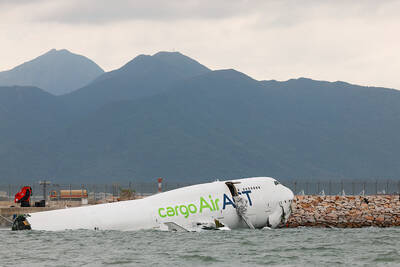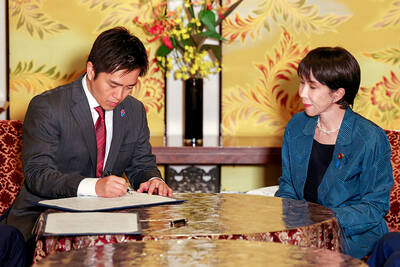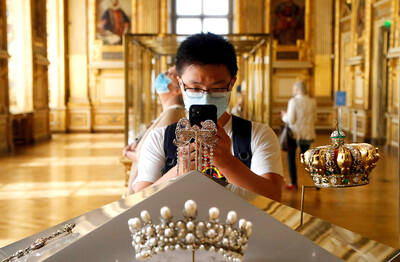Forget turkey and mince pies. This Christmas Australians are being urged to serve native foods such as smoked kangaroo with wild lime and brandy sauce and wattle seed pavlova.
Despite an abundance of unique fruits, nuts, and meat that have sustained the country's Aboriginal inhabitants for centuries, Australians are only now embracing native food, with some supermarkets starting to stock indigenous produce this year.
This step into the mainstream has inspired campaigners who have struggled to get indigenous foods onto the nation's dining tables and destroy the image of native food as simply juicy fat witchetty grubs, protein-rich bogong moths, and honey ants.
"For 200 years of white settlement there's been resistance and ignorance about indigenous foods and it's only in the past year the market has started to take off," said Juleigh Robins, founder of native food group Robins Australian Foods.
"But it is so logical to use indigenous food, with foreign crops and livestock contributing to severe land degradation problems. I think in the next year or so we'll see a major increase in the use of native foods in Australia and overseas."
When the British first colonized Australia in 1788, the ill-prepared settlers didn't know where to find food and overlooked the fact that the continent's indigenous Aborigines had successfully lived off the land for up to 60,000 years.
The British arrivals didn't identify the millions of wild kangaroos or emus as edible protein, preferring to eradicate them and instead raise cattle and sheep with which they were familiar. They also shunned native plants, which were rich food sources, and converted the land to European agriculture to raise cattle and plant traditional orchards for European-style fruits.
Old habits die hard and until the 1950s Australian cooking was synonymous with British food. But gradually the influence of Asian migrants spread to Australian kitchens, with a Chinese restaurant becoming a standard fixture in every country town.
But bush tucker is still regarded as eccentric and niche, with the industry only worth about A$17 million (US$13 million) a year. Tourists are often keener to try unique Australian fare while the locals still opt for beef rather than kangaroo.
Growing interest from the five million overseas visitors to Australia every year has spurred some restaurants to focus exclusively on native foods, using such ingredients as bush tomatoes, lemon aspen (a citrus-flavored leaf), and lemon myrtle (a small fruit) on emu, crocodile and stingray.
This has generated a new respect for native foods within Australia, where Aboriginal art was also largely shunned until it earned international accolades.
Some supermarkets in Britain and Germany have started to stock sauces and pickles made from indigenous foods. They are marketed as healthy, organic and environmentally friendly, and distributors from France and Ireland are also entering the market.
Aware of the market's potential, the Rural Industries Research and Development Corp has set up a five-year plan to develop the native food industry which now involves about 500 mainly small businesses, from harvesters to restaurants.
"There is significant interest from export markets in Europe and North America. This interest is fostered by the success overseas of Australian wines, meats and seafood," the group, funded by the government, said in a recent report.

Indonesia was to sign an agreement to repatriate two British nationals, including a grandmother languishing on death row for drug-related crimes, an Indonesian government source said yesterday. “The practical arrangement will be signed today. The transfer will be done immediately after the technical side of the transfer is agreed,” the source said, identifying Lindsay Sandiford and 35-year-old Shahab Shahabadi as the people being transferred. Sandiford, a grandmother, was sentenced to death on the island of Bali in 2013 after she was convicted of trafficking drugs. Customs officers found cocaine worth an estimated US$2.14 million hidden in a false bottom in Sandiford’s suitcase when

CAUSE UNKNOWN: Weather and runway conditions were suitable for flight operations at the time of the accident, and no distress signal was sent, authorities said A cargo aircraft skidded off the runway into the sea at Hong Kong International Airport early yesterday, killing two ground crew in a patrol car, in one of the worst accidents in the airport’s 27-year history. The incident occurred at about 3:50am, when the plane is suspected to have lost control upon landing, veering off the runway and crashing through a fence, the Airport Authority Hong Kong said. The jet hit a security patrol car on the perimeter road outside the runway zone, which then fell into the water, it said in a statement. The four crew members on the plane, which

Japan’s ruling Liberal Democratic Party (LDP) and its junior partner yesterday signed a coalition deal, paving the way for Sanae Takaichi to become the nation’s first female prime minister. The 11th-hour agreement with the Japan Innovation Party (JIP) came just a day before the lower house was due to vote on Takaichi’s appointment as the fifth prime minister in as many years. If she wins, she will take office the same day. “I’m very much looking forward to working with you on efforts to make Japan’s economy stronger, and to reshape Japan as a country that can be responsible for future generations,”

SEVEN-MINUTE HEIST: The masked thieves stole nine pieces of 19th-century jewelry, including a crown, which they dropped and damaged as they made their escape The hunt was on yesterday for the band of thieves who stole eight priceless royal pieces of jewelry from the Louvre Museum in the heart of Paris in broad daylight. Officials said a team of 60 investigators was working on the theory that the raid was planned and executed by an organized crime group. The heist reignited a row over a lack of security in France’s museums, with French Minister of Justice yesterday admitting to security flaws in protecting the Louvre. “What is certain is that we have failed, since people were able to park a furniture hoist in the middle of